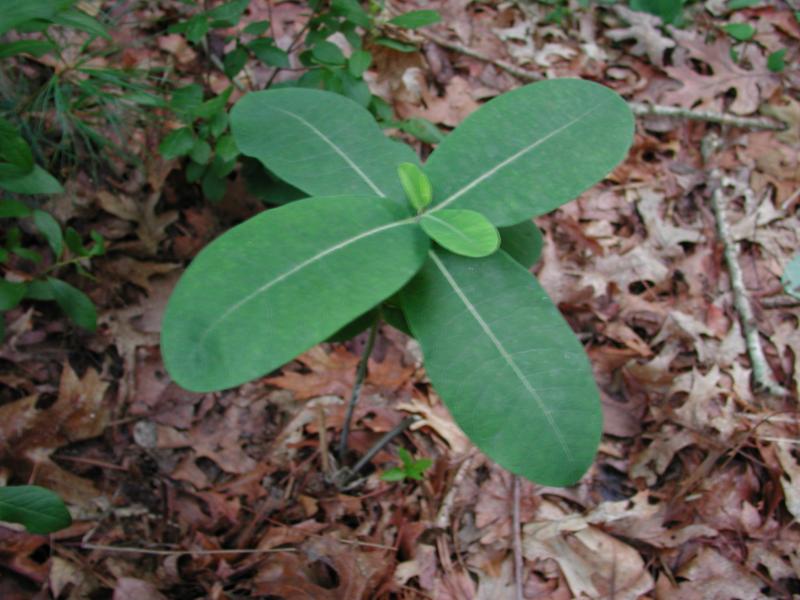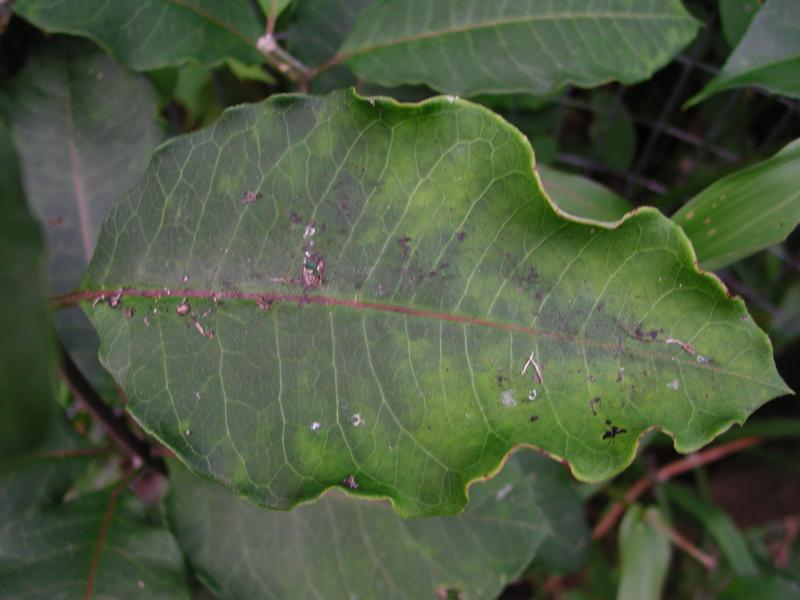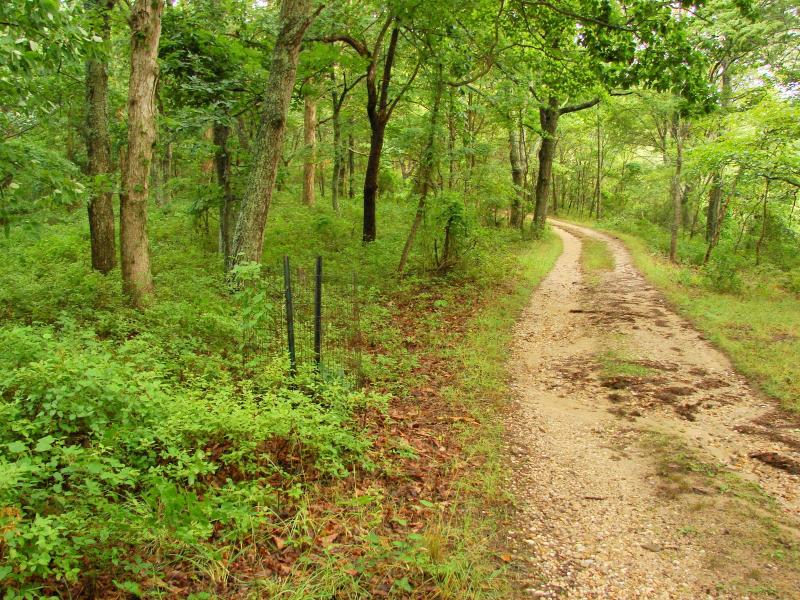White Milkweed
Asclepias variegata L.
- Class
- Dicotyledoneae (Dicots)
- Family
- Apocynaceae (Dogbane Family)
- State Protection
- Endangered
Listed as Endangered by New York State: in imminent danger of extirpation in New York. For animals, taking, importation, transportation, or possession is prohibited, except under license or permit. For plants, removal or damage without the consent of the landowner is prohibited.
- Federal Protection
- Not Listed
- State Conservation Status Rank
- S1
Critically Imperiled in New York - Especially vulnerable to disappearing from New York due to extreme rarity or other factors; typically 5 or fewer populations or locations in New York, very few individuals, very restricted range, very few remaining acres (or miles of stream), and/or very steep declines.
- Global Conservation Status Rank
- G5
Secure globally - Common in the world; widespread and abundant (but may be rare in some parts of its range).
Summary
Did you know?
In John Torrey's Flora of New York of 1843, he reported this species as "rather common" on Long Island and Manhattan. Much of its former habitat has now been developed and fewer than 50 plants now cling to survival in eastern Long Island.
State Ranking Justification
There are four existing populations but they are all very small and in danger of extirpation. There are 10 populations known from the late 1800s and early 1900s through 1961 that have not been resurveyed. There is one old population that was resurveyed but not found and five populations around New York City that are considered extirpated.
Short-term Trends
Short-term population trends are negative. Two of the four populations may be gone and the other two are not doing very well and need protection.
Long-term Trends
In the 1800s this species was considered rather common on Long Island but populations have since been reduced to a small number of plants.
Conservation and Management
Threats
Succession and improper mowing schedules are threat to existing populations.
Conservation Strategies and Management Practices
This species needs disturbance to reduce competition from woody plants and more aggressive herbaceous plants but too much direct disturbance, especially by mowing, to the plants will reduce or eliminate the population. Its habitat could be disturbed in the non-growing season to open it up for seed germination and colonization but direct disturbance should be avoided during the growing season.
Research Needs
Research is needed to understand how best to augment existing populations.
Habitat
Habitat
In New York White Milkweed has been found in and along the edges of dry woods dominated by various oak and heath species (New York Natural Heritage Program 2010). Dry woods (Rhoads and Block 2000). Upland woods and thickets (Gleason & Cronquist 1991).
Associated Ecological Communities
- Coastal oak-heath forest
(guide)
A low diversity, large patch to matrix, hardwood forest that typically occurs on dry, well-drained, sandy soils of glacial outwash plains or moraines of the Atlantic Coastal Plain. The forest is usually codominated by two or more species of scarlet oak, white oak, and black oak.
- Coastal oak-hickory forest*
(guide)
A hardwood forest with oaks and hickories codominant that occurs in dry, well-drained, loamy sand of knolls, upper slopes, or south-facing slopes of glacial moraines of the Atlantic Coastal Plain.
* probable association but not confirmed.
Associated Species
- Acer rubrum
- Carex pensylvanica (Pennsylvania sedge)
- Carya
- Cornus florida (flowering dogwood)
- Gaylussacia baccata (black huckleberry)
- Lysimachia quadrifolia (whorled-loosestrife)
- Parthenocissus
- Quercus alba (white oak)
- Quercus coccinea (scarlet oak)
- Quercus velutina (black oak)
- Smilax
- Vaccinium angustifolium (common lowbush blueberry)
- Vitis
Range
New York State Distribution
There are just a few known populations in eastern Suffolk County and the Bronx. It was historically known from the New York City area to Westchester but no new plants have been found.
Global Distribution
This milkweed is most common in the southeastern and midwestern United States from Texas to Florida and north to Missouri and Illinois. It becomes increasingly rare to the northeast and reaches its northern limit in New York. It is now gone from Ontario and Connecticut.
Identification Comments
General Description
Distinguishing characteristics: 4-6 pair of leaves, opposite, ovate, oval, or obovate, tapering into definite petioles; flowers white with purplish centers, 8-12 mm long; hoods orbicular-ventricose. White milkweed is an erect, perennial herb, growing up to 1 meter tall. Like those of most milkweed species, its leaves and stems bleed its namesake sticky, whitish sap when cut. It has 4 to 6 pairs of opposite, entire, glabrous leaves with definite petioles. The infloresence consists of 1 to 4 compact umbels. The flowers are white (sometimes tinged with pink) with the strongly reflexed "upside-down" looking corolla typical of the genus, with a corona of "hoods" arising from the filaments (Rhoads and Block 2000, Gleason and Cronquist 1991).
Best Life Stage for Proper Identification
White milkweed is best identified when in flower.
Similar Species
Three other New York milkweeds may have white flowers; Asclepias verticillata, A. amplexicaulis, and A. exaltata. A. verticillata has very narrow, linear leaves arranged in whorls of 3 to 6, and A. amplexicaulis has pairs of sessile, clasping leaves; A. variegata has paired, broad leaves with obvious petioles. A. exaltata has few-flowered umbels, and its flowers have "horns" protruding from their hoods, while A. variegata has many-flowered umbels with horns shorter than the hoods (Rhoads and Block 2000, Gleason and Cronquist 1991).
Best Time to See
White Milkweed flowers in June and early July, and the fruits can persist from July into October.
- Flowering
- Fruiting
The time of year you would expect to find White Milkweed flowering and fruiting in New York.
White Milkweed Images
Taxonomy
White Milkweed
Asclepias variegata L.
- Kingdom Plantae
- Phylum Anthophyta
- Class Dicotyledoneae
(Dicots)
- Order Gentianales
- Family Apocynaceae (Dogbane Family)
- Order Gentianales
- Class Dicotyledoneae
(Dicots)
- Phylum Anthophyta
Additional Resources
Best Identification Reference
Gleason, Henry A. and A. Cronquist. 1991. Manual of Vascular Plants of Northeastern United States and Adjacent Canada. The New York Botanical Garden, Bronx, New York. 910 pp.
Other References
Fernald, M. L. 1950. Gray's manual of botany. 8th edition. Corrected printing (1970). D. Van Nostrand Company, New York. 1632 pp.
Holmgren, Noel. 1998. The Illustrated Companion to Gleason and Cronquist's Manual. Illustrations of the Vascular Plants of Northeastern United States and Adjacent Canada. The New York Botanical Garden, Bronx, New York.
New York Natural Heritage Program. 2010. Biotics database. New York Natural Heritage Program. New York State Department of Environmental Conservation. Albany, NY.
New York Natural Heritage Program. 2024. New York Natural Heritage Program Databases. Albany, NY.
Torrey, John. 1843. Flora of New York. 2 vols.
Weldy, T. and D. Werier. 2010. New York flora atlas. [S.M. Landry, K.N. Campbell, and L.D. Mabe (original application development), Florida Center for Community Design and Research http://www.fccdr.usf.edu/. University of South Florida http://www.usf.edu/]. New York Flora Association http://newyork.plantatlas.usf.edu/, Albany, New York
Links
About This Guide
This guide was authored by: Stephen M. Young
Information for this guide was last updated on: September 6, 2012
Please cite this page as:
New York Natural Heritage Program. 2024.
Online Conservation Guide for
Asclepias variegata.
Available from: https://guides.nynhp.org/white-milkweed/.
Accessed July 26, 2024.


